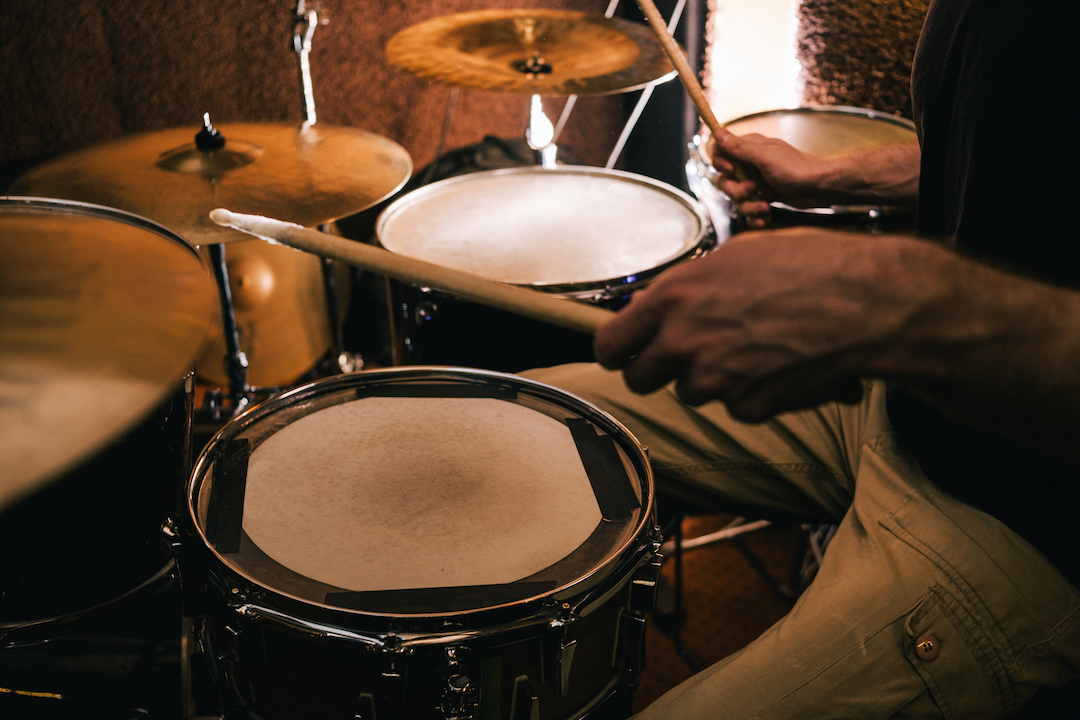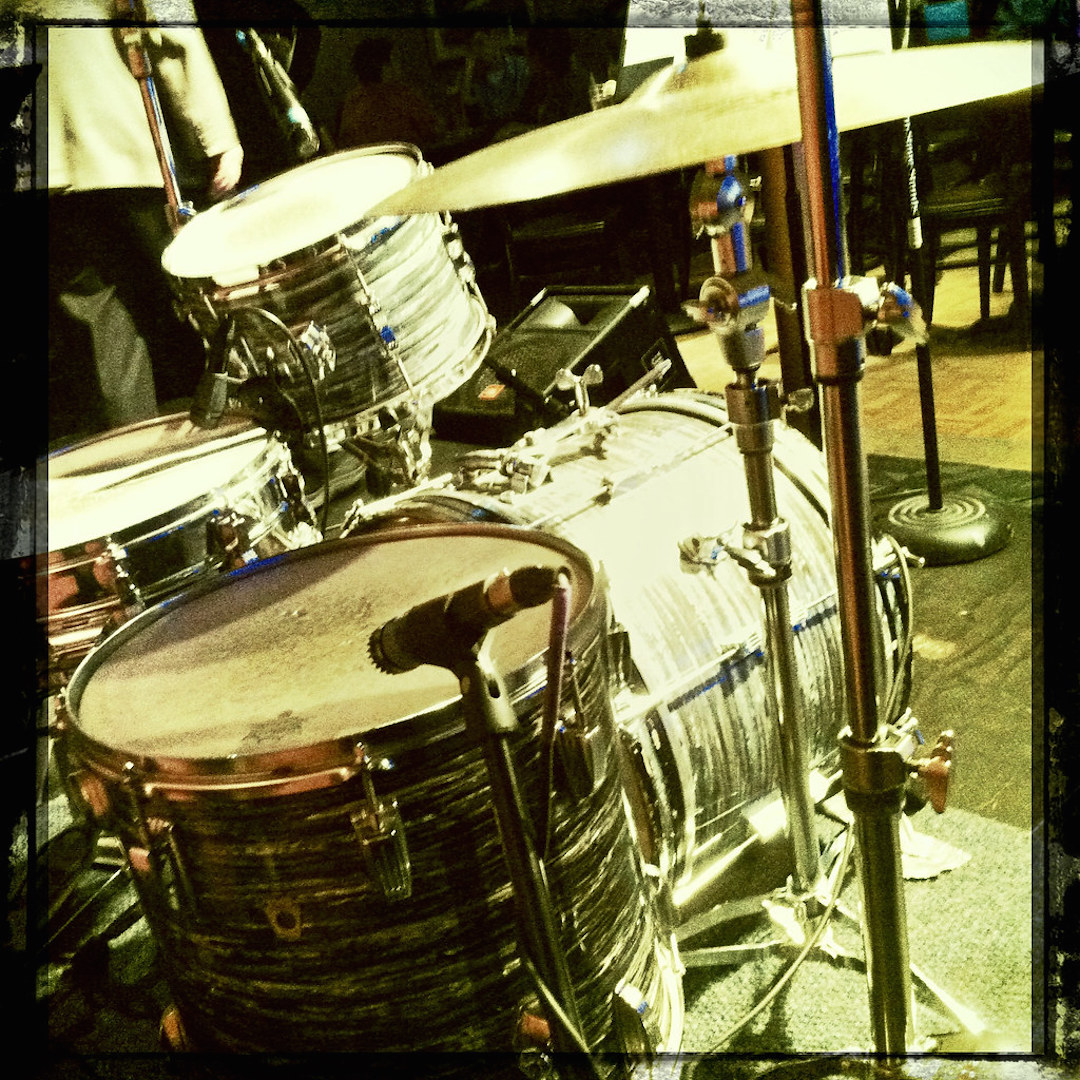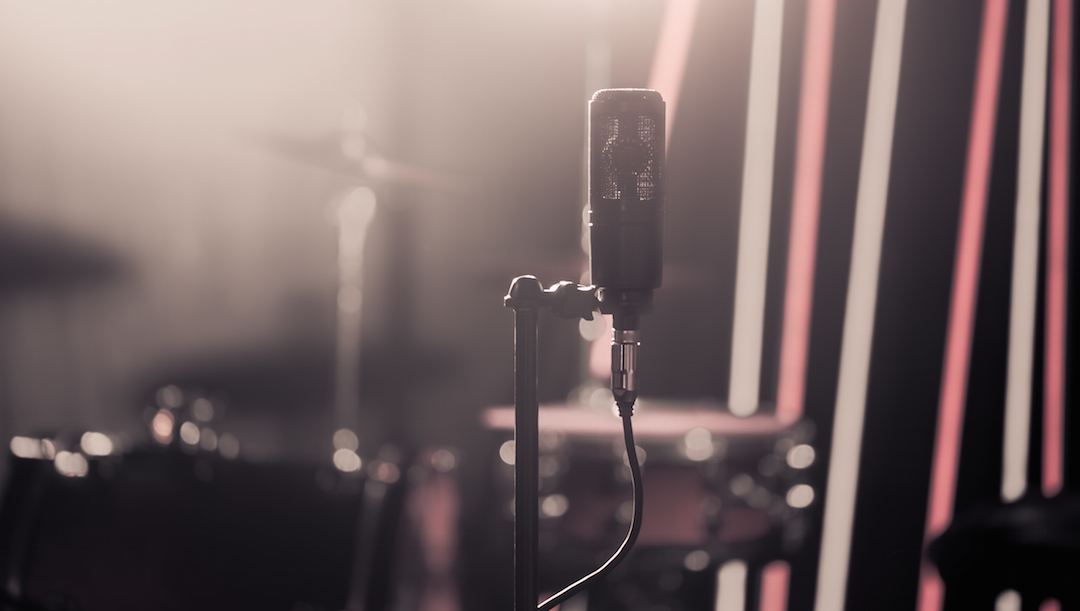8 of the Most Common Mistakes When Recording Drums
This is a guest post by Ian R. of DrumRadar.
Recording drums effectively takes practice and experience. But you can jump start your drum recording skills by avoiding some of the most common pitfalls that crop up again and again.
There are a few things that are easily overlooked by beginners—elements that may seem trivial at first, but can greatly enhance the recording if taken care of properly. Today, we’ll go over eight of the most common mistakes that beginners make when recording drums.
1. Muffling Drums Heads Too Much

A little bit of muffling can improve your sound, but going overboard with dampening to chase down unruly resonances is a common mistake, and no substitute for good drum tuning. A “less is more” approach, using moongels and strategic bits of tape often yields better results.
One of the most common errors made by musicians and engineers recording early on is that they will muffle their drum heads too drastically.
Overzealous muffling is often a misguided shortcut to dealing with issues that are better addressed through good drum tuning. (More on that in a moment.)
When you record your drums, you’ll be translating all of their acoustic energy into data that you can manipulate further. But the less useful sound energy you pick up, the less useful data you’ll have to work with later on. You can’t squeeze blood from a stone, and you can’t squeeze a good tone out of an overly-muffled drum kit.
When you open up the sound of your drums with minimal, strategic muffling, the true characteristics of the shell materials and depths can truly shine, and provided that you’ve tuned the kit decently, this generally leads to a better mix and a fuller sound overall.
When the drums have very little sustain, it can lead to a flat, cardboard-like sound, and you or the sound engineer won’t have much to work with. Unless you’re going for a special effect, avoid over muffling at all costs.
2. Ignoring Drum Heads and Tuning

If you can see countless drum stick marks—or worse yet, dents and divots—all over your drum heads, it’s time to change them before your big session. Image by Andrew Malone.
Different drum heads will produce different sounds during recording, and how you tune also has a dramatic effect.
Beginners will sometimes use the wrong drum heads for the tone they are after, or tune their drums poorly for their mix.
Relying on worn-out drum heads is an issue for many beginners as well.
The sound of a brand-new drum head is head-and-shoulders above the sound you’ll get from one that’s seen months of abuse. Sure, it will take extra time to swap them out, but the end result will be well worth it.
Simply understanding differences in drum heads can lead to better recording sessions and fewer do-overs. Here’s a quick and by no means comprehensive overview:
- 1-ply: These types of drum heads resonate very well and help bring out the overtones and sustain of the drum. They’re great for lighter styles of music, but are acceptable for rock, too, especially when additional resonance is called for.
- 2-ply: These are more durable than 1-ply drum heads and have reduced overtones and can sustain for shorter amounts of time. They are often better for rock or music that relies on sharp articulation and hard-hitting performances.
- Coated vs clear: Coated heads often produce a more muffled sound, while clear heads tend to sound bright and open.
Of course, there are additional variables. Some drum heads will include built in muffling, such as a power dot (often excessive for the recording studio environment), or gentler rim-mounted muffling that can be more appropriate. But in general, any muffling is best done in the studio by hand, using moongels or small bits of tape to help tailor the tone to the song at hand.
You should also be sure to practice your drum head tuning skills to make sure each drum has a clear and full tone and that have good note relationships between your various drums. Certain frequencies will also cause the snares vibrate excessively, so make sure to play around and see what works with your specific configuration.
This is a subject that warrants an entire post in its own right, but it is something you simply cannot skimp on. Take the time to figure out what sounds best with your kit, and your recording will be better for it.
If you’re working on an important project and have the budget for it, hiring in a drum tech to help with setup can be a life-changing experience. Even taking some lessons specifically on drum tuning, whether you’re a player or a producer, can pay dividends for years to come.
3. Ignoring Room Treatment and Configuration
It’s easy to get caught up in the thrill of recording, but you need to have your room configured well for all that energy to be worthwhile.
Many beginners make the mistake of not cleaning their room, or having other drums or shells lying around. This is a major issue since sound can be reverberated by these extra drums. This sound will almost certainly be picked up by your mics and interfere with the tone of your main kit.
It’s important to have at least some basic acoustic treatment in your space to get the most out of it, and in a pinch, you could at least see about hanging rugs on your walls or creating makeshift baffles out of mattresses and blankets to get better performance out of your space and your kit.
When you record drums, you’re not only recording the kit, but also the way that kits sounds in the room. Spending a little bit of time or money on this part of the equation will lead to better mixes and more satisfaction on every project you do.
4. Placing Drums Too Close to Walls
In addition to not paying enough attention to the room itself, beginners often inadvertently set up their drums too close to their walls. This is a mistake because sound reflections from your drums will bounce off surfaces even more easily if they’re pressed up against a wall, interfering with their tone. Even if you have decently treated walls, this can still be a problem.
Worse yet, you can place your drums too close to two walls by placing them in a corner. The negative effects of excessive reflections are made even worse in the scenario as you will experience uneven bass build up and low frequency resonances that can be really problematic in a mix.
A good, easy measuring stick to use is your own arm. If you can touch a wall from your throne position, you are certainly too close and should move your drum set further away from the wall.
5. Not Using a Drum Mat
Adding a drum mat is one of the best changes you can make if you’re trying to get the best recording mix that you can. This doesn’t have to be an official “licensed” or costly drum mat. You can even use rugs or pieces of carpet and still achieve the same result.
Why does this matter? Well, your drum legs and/or spikes are going to be constantly banging into the floor as a result of your drumming. All of these impacts can eventually lead to damage, particularly if you have a hardwood floor. But it can damage your tone, too.
Not only can this squeaking and sliding be picked up by mics, but your whole entire drum kit can actually move in relation to your mics, potentially bumping in to some of them.
You can avoid this damage to your floors and your sound by simply placing a soft surface beneath your drum legs. As an alternate measure, some drummers will opt for one or more weighted blocks to help keep the drum kit in place, Just be careful to avoid letting them touch the drum shells themselves, thereby compromising their resonance and causing damage or other issues.

Be sure to check your mics, stands and cables to avoid slipping and touching drum heads and shells. Image by Alex Bellink.
6. Letting Mics or Stands Touch the Drum Kit
Speaking of letting things touch the drum kit, having parts of your microphone stand touching your drum kit can lead to really bad recordings.
While it’s important to have your microphones in their proper positions, if your microphone stands or mic cables actually touch the drum kit, the vibrations you create will travel into the microphone and compromise the recorded sound.
Take an extra moment to make sure that the stands and cables are totally isolated from any part of your drum kit.
7. Forgetting to Flatten and Tidy Mic Cables
Related to #6, this is a small mistake, but it can lead to little issues that will drive you crazy. Make sure that your cables are organized well and lie totally flat. This will stop them from snagging on your feet or the legs of your drum kit as you tuck everything away.
Tripping over a mic cable in session cannot only cause injury to you, but to your microphones and your painstaking mic setup.
Cables also need to have enough length so you can make minor adjustments in the middle of a recording session without having to tear apart your entire setup. It’s a balance. You don’t want them to be too tight or too loose, but just right.
8. Bad Mic Placement
Poor mic placement is another common mistake, and it’s fodder for an entire post of its own.
Different drum tones may benefit from different types of microphones and different placement strategies, so a bit of good research and testing here is essential before you get started.
Unfortunately, you can’t simply rely on mic placements that you’ve seen in music videos or behind-the-scenes footage of your favorite drummers. There are too many variables and subtleties of placement that can’t be gleaned from these kinds of images.
Instead, you’ll need to do a lot of listening and actually do some test recordings to get a feel for the optimal mic placement for your drumming room and the sound you want to achieve.
Don’t be afraid to adjust your mic angles frequently or switch out mics if you think that one will be better than another. It’s much better to fix tone and balance problems while recording instead of during editing and processing phase.
Speaking of “phase”, poor phase relationships between microphones are a common killer of drum tones. Experiment with switching the polarity of each of your microphone channels, and leave the polarity switch in the position that gives you the biggest, fullest tone.
If you don’t hear much of a change when flipping the polarity switch on two mics that are pointing directly at the same source, you may have a pair of microphones that are halfway out of phase. This can actually be worse that having mics that are completely out of phase, because you can’t fix the problem by simply flipping a polarity switch! Consider adjusting the placement of mic pairs that exhibit this issue.
Summing it Up
Fortunately, most of these tweaks are very simple and should take no time at all to implement. A couple of them, like mic placement and tuning, are simple to start implementing, but can take a lifetime to master.
If you are recording a drummer other than yourself, making sure they have everything set up to your liking can be more of a challenge. When it comes to something like drum head muffling for example, drummers can be very specific about how they want things to sound to their own ears, and can sometimes be too stubborn to make changes that they don’t understand the reasoning for.
It’s important to be respectful and patient and take the time to explain that what sounds good to them, standing next to the kit can sound very different when recorded. As long as you respect their tastes and craft and cordially explain why things need tweaking, they will often gladly respect your needs as well, and comply most of the time.
As with playing, practice is key when it comes to recording. Everyone started as a beginner and became better over time. Now that you can start to avoid these mistakes, your recordings are sure to be better than ever.
Do you have any tips and tricks to get the most out of your drum recording sessions? Let us know in the comments below!
Ian R. is a life-long musician and the owner/editor of the popular music blogs DrumRadar, BassGuitarGuide, and ThrivePiano.
Please note: When you buy products through links on this page, we may earn an affiliate commission.







